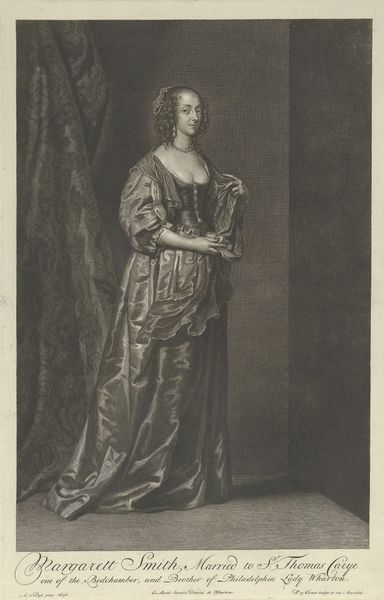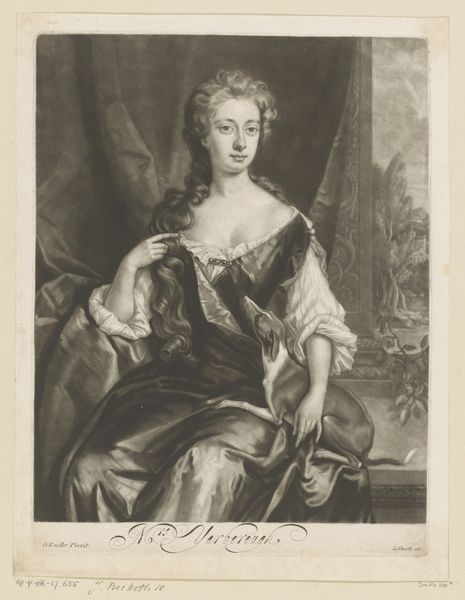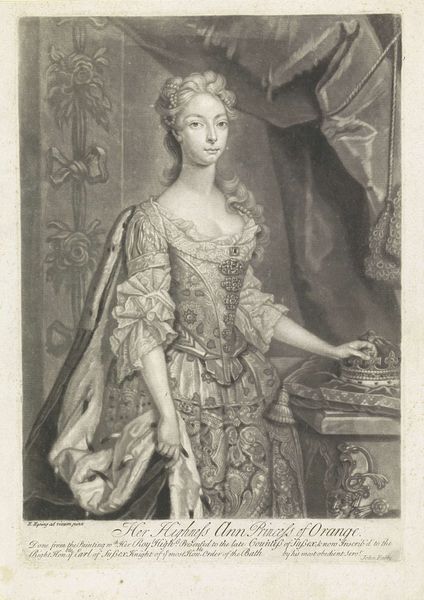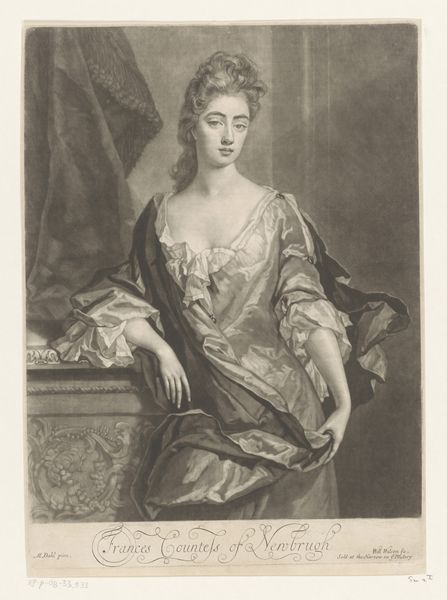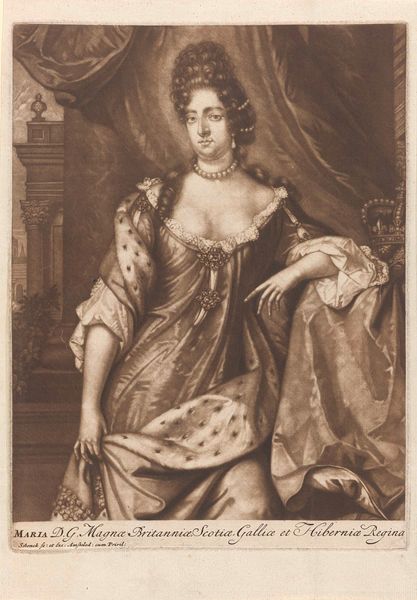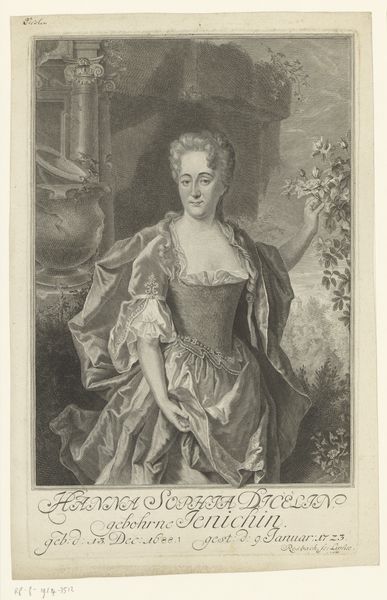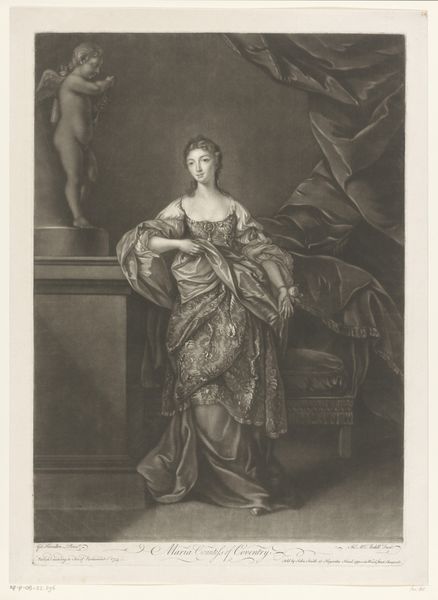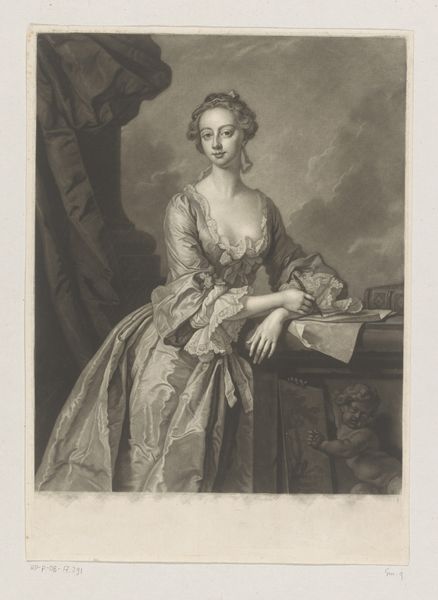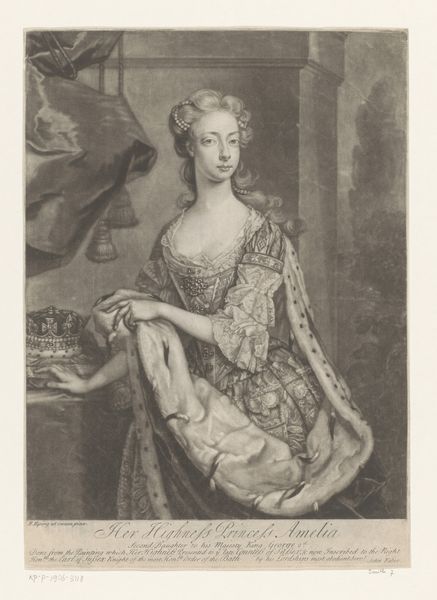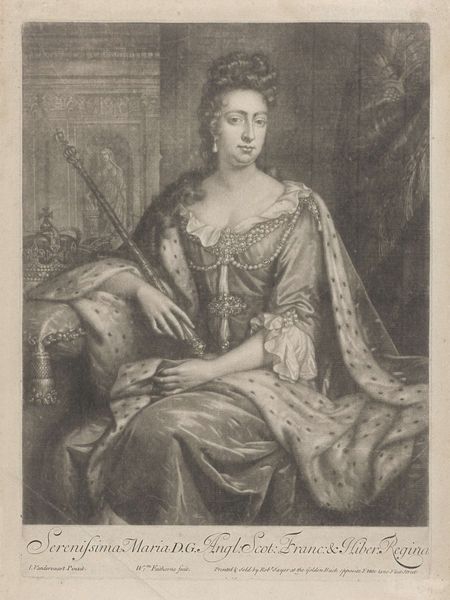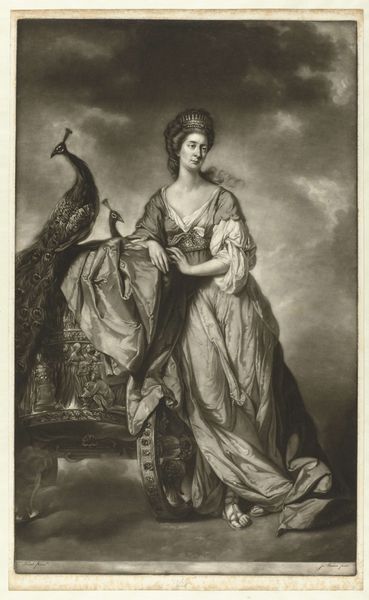
Portret van Henrietta Maria van Bourbon, koningin van Engeland 1716
0:00
0:00
pietervangunst
Rijksmuseum
drawing, print, paper, engraving
#
portrait
#
pencil drawn
#
drawing
#
baroque
# print
#
paper
#
pencil drawing
#
portrait drawing
#
engraving
Dimensions: width 332 mm, height 512 mm
Copyright: Rijks Museum: Open Domain
Curator: Looking at this artwork, one is immediately struck by the opulence. Editor: Agreed. There’s almost a somber elegance about it. The shading is masterful; it lends a heavy, dramatic quality to the entire composition. Curator: This is a print, an engraving, of Henrietta Maria van Bourbon, Queen of England. It was created in 1716 by Pieter van Gunst. Prints like these circulated widely and shaped public perception of the monarchy. Editor: It is hard to escape considering Henrietta Maria’s role in the lead up to the English Civil War when you look at a piece like this. There is the rose on the table symbolizing a Stuart claim. The composition has been deliberately set. Her gaze looks beyond us in such a way that reinforces this aloof royal status. Curator: Indeed. Remember that prints, especially portraits like these, played a significant role in constructing and disseminating royal authority and shaping public memory of influential figures. Engravings after paintings facilitated accessibility, reproducing and translating the symbolic power inherent in royal portraiture for much wider audiences. Editor: This is exactly what the dominant patriarchal structure in society expected. Power was performed in images, it didn't matter so much for these elites how that differed to the reality on the ground. The illusion of command was more than enough. Curator: Exactly, in studying this portrait, we can reflect on how notions of power were projected and reinforced via this Baroque visual culture of the time. Editor: It leaves me pondering the performance of queenship – the expectations, the constraints – within a deeply patriarchal system. Thank you for helping me see beyond the surface here, understanding art is really to grapple with these questions, not merely see a representation of someone that lived hundreds of years ago.
Comments
No comments
Be the first to comment and join the conversation on the ultimate creative platform.
